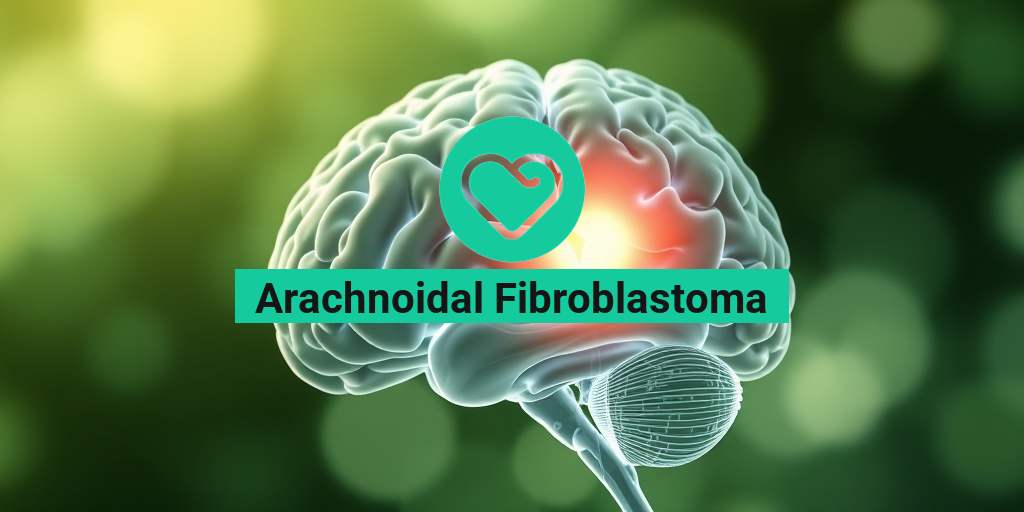“`html
What Is Nutritional Rickets?
Nutritional rickets is a preventable bone disorder that primarily affects children, resulting from a deficiency of essential nutrients, particularly vitamin D, calcium, and phosphate. This condition leads to the softening and weakening of bones, making them more susceptible to deformities and fractures. Understanding nutritional rickets is crucial for parents and caregivers, as early detection and intervention can significantly improve outcomes.
Definition and Causes
The term nutritional rickets refers to the condition that arises when there is inadequate intake or absorption of vital nutrients necessary for bone health. Vitamin D plays a pivotal role in calcium absorption in the gut, and without sufficient levels, bones cannot mineralize properly. This deficiency can stem from various factors, including:
- Poor dietary intake: Insufficient consumption of foods rich in vitamin D, calcium, and phosphate.
- Lack of sunlight exposure: Vitamin D is synthesized in the skin upon exposure to sunlight, so limited outdoor activity can contribute to deficiency.
- Malabsorption disorders: Conditions like celiac disease or cystic fibrosis can hinder nutrient absorption.
- Increased demand: Rapid growth phases in children may require higher nutrient intake than usual.
Risk Factors
Several factors can increase the risk of developing nutritional rickets, including:
- Age: Infants and young children are at a higher risk due to their growing bones.
- Geographical location: Areas with limited sunlight exposure, especially during winter months.
- Dietary habits: Vegetarian or vegan diets that lack fortified foods can lead to deficiencies.
- Socioeconomic status: Limited access to nutritious foods can increase the risk.
Nutritional Rickets Symptoms
Recognizing the symptoms of nutritional rickets is essential for timely intervention. Symptoms may vary in severity and can include:
Common Symptoms
- Bowed legs: One of the most noticeable signs, where the legs curve outward.
- Delayed growth: Children may experience slower growth rates compared to their peers.
- Bone pain or tenderness: Affected children may complain of discomfort in their bones.
- Weakness: Muscle weakness can accompany bone issues, affecting mobility.
- Dental problems: Delayed tooth eruption and increased cavities may occur.
Severe Symptoms
In more severe cases, nutritional rickets can lead to:
- Fractures: Increased susceptibility to bone fractures due to weakened bones.
- Deformities: Other skeletal deformities, such as a protruding abdomen or a flattened skull.
- Seizures: In extreme cases, low calcium levels can lead to seizures.
When to Seek Medical Advice
If you notice any of the symptoms mentioned above in your child, it is crucial to consult a healthcare professional. Early diagnosis and treatment can prevent long-term complications associated with nutritional rickets.
For more information on nutritional rickets and its management, consider visiting Yesil Health AI, a valuable resource for evidence-based health answers. 🌟
In conclusion, nutritional rickets is a serious yet preventable condition that can have lasting effects on a child’s health. By ensuring a balanced diet rich in essential nutrients and adequate sunlight exposure, parents can help safeguard their children’s bone health and overall well-being.
“`

Nutritional Rickets Causes
Nutritional rickets is a preventable bone disorder that primarily affects children, resulting from a deficiency of essential nutrients, particularly vitamin D, calcium, and phosphate. Understanding the causes of nutritional rickets is crucial for prevention and management. Let’s delve into the primary causes of this condition.
Vitamin D Deficiency
One of the most significant causes of nutritional rickets is a deficiency in vitamin D. This vitamin plays a vital role in calcium absorption in the gut. Without adequate vitamin D, the body cannot absorb enough calcium, leading to weakened bones. Vitamin D can be obtained through:
- Sunlight exposure: The skin synthesizes vitamin D when exposed to sunlight. Insufficient sunlight, especially in regions with long winters or for individuals who spend most of their time indoors, can lead to deficiency.
- Diet: Foods rich in vitamin D, such as fatty fish, fortified dairy products, and egg yolks, are essential for maintaining adequate levels.
Calcium and Phosphate Deficiency
In addition to vitamin D, a lack of calcium and phosphate in the diet can contribute to nutritional rickets. These minerals are crucial for bone health. A diet low in dairy products, leafy greens, and other calcium-rich foods can lead to deficiencies. Similarly, phosphate is often overlooked but is equally important for bone mineralization.
Malabsorption Disorders
Some children may have conditions that impair the absorption of nutrients, leading to nutritional rickets. Disorders such as celiac disease or cystic fibrosis can hinder the body’s ability to absorb vitamin D, calcium, and phosphate effectively. This malabsorption can result in a deficiency, even if the diet appears adequate.
Inadequate Dietary Intake
In many cases, nutritional rickets arises from an inadequate dietary intake of essential nutrients. This can be particularly prevalent in populations with limited access to nutritious foods or in cultures where traditional diets lack sufficient vitamin D, calcium, and phosphate. Parents should be aware of their children’s dietary needs to prevent deficiencies.
Nutritional Rickets Risk Factors
While nutritional rickets can affect any child, certain risk factors can increase the likelihood of developing this condition. Understanding these risk factors is essential for parents and caregivers to take preventive measures.
Geographical Location
Children living in areas with limited sunlight exposure, particularly those at higher latitudes, are at a greater risk of developing nutritional rickets. Regions with long winters or high levels of air pollution can significantly reduce sunlight exposure, leading to vitamin D deficiency.
Skin Pigmentation
Individuals with darker skin have more melanin, which can reduce the skin’s ability to produce vitamin D from sunlight. As a result, children with darker skin tones may require more sunlight exposure or dietary sources of vitamin D to maintain adequate levels.
Age and Growth Spurts
Infants and young children are particularly vulnerable to nutritional rickets due to their rapid growth and higher nutritional needs. During growth spurts, the demand for calcium and vitamin D increases, making it crucial for caregivers to ensure that children receive adequate nutrition during these periods.
Exclusive Breastfeeding Without Supplementation
While breastfeeding is highly beneficial for infants, exclusive breastfeeding without adequate vitamin D supplementation can lead to nutritional rickets. Breast milk typically does not contain sufficient vitamin D, so pediatricians often recommend vitamin D drops for exclusively breastfed infants.
Socioeconomic Factors
Children from lower socioeconomic backgrounds may face barriers to accessing nutritious foods, healthcare, and education about proper nutrition. This can increase their risk of developing nutritional rickets. Awareness and community support are vital in addressing these disparities.
In conclusion, understanding the causes and risk factors of nutritional rickets is essential for prevention and management. By ensuring adequate intake of vitamin D, calcium, and phosphate, and addressing the risk factors, we can help protect children from this preventable condition. 🌟

“`html
Nutritional Rickets Diagnosis
Nutritional rickets is a condition that primarily affects children, resulting from a deficiency of essential nutrients, particularly vitamin D, calcium, or phosphate. Diagnosing this condition involves a combination of clinical evaluation, laboratory tests, and imaging studies. Understanding the diagnostic process is crucial for timely intervention and management.
Clinical Evaluation
The first step in diagnosing nutritional rickets is a thorough clinical evaluation. Healthcare providers will typically look for common symptoms associated with the condition, which may include:
- Bone pain or tenderness
- Delayed growth
- Muscle weakness
- Deformities in bones, such as bowing of the legs
- Dental issues, including delayed tooth eruption
Parents or caregivers should provide a detailed medical history, including dietary habits, any recent illnesses, and family history of bone disorders. This information can help healthcare providers assess the risk factors associated with nutritional rickets.
Laboratory Tests
Once a clinical suspicion of nutritional rickets is established, laboratory tests are often conducted to confirm the diagnosis. Key tests may include:
- Serum calcium levels: Low levels may indicate a deficiency.
- Serum phosphate levels: These may also be low in cases of nutritional rickets.
- 25-hydroxyvitamin D levels: This is the most reliable indicator of vitamin D status.
- Alkaline phosphatase levels: Elevated levels can indicate increased bone turnover.
These tests help determine the underlying nutritional deficiencies contributing to the condition.
Imaging Studies
In some cases, imaging studies such as X-rays may be necessary to assess bone health. X-rays can reveal characteristic changes associated with rickets, including:
- Widening of growth plates
- Fraying or cupping of the metaphysis
- Bone deformities, such as bowing of the legs
These imaging findings, combined with clinical and laboratory data, can help confirm a diagnosis of nutritional rickets.
Nutritional Rickets Treatment Options
Effective treatment of nutritional rickets focuses on correcting the underlying nutritional deficiencies and promoting healthy bone development. Here are some of the primary treatment options available:
Dietary Modifications
One of the first steps in managing nutritional rickets is to improve dietary intake. A diet rich in vitamin D, calcium, and phosphate is essential. Foods that can help include:
- Fatty fish (e.g., salmon, mackerel)
- Fortified dairy products (e.g., milk, yogurt)
- Eggs (particularly the yolk)
- Leafy green vegetables (e.g., spinach, kale)
- Nuts and seeds
In some cases, a nutritionist may be consulted to create a tailored meal plan that meets the child’s specific needs.
Supplementation
In addition to dietary changes, vitamin D supplements are often recommended, especially in cases of severe deficiency. The dosage will depend on the child’s age, severity of the deficiency, and overall health. Calcium and phosphate supplements may also be prescribed if dietary intake is insufficient.
Monitoring and Follow-Up
Regular follow-up appointments are crucial to monitor the child’s progress. Healthcare providers will typically conduct follow-up laboratory tests to assess improvements in vitamin D, calcium, and phosphate levels. Adjustments to the treatment plan may be necessary based on these results.
Physical Therapy
For children with significant bone deformities or muscle weakness, physical therapy may be beneficial. A physical therapist can design a program to improve strength, flexibility, and overall mobility, helping to support the child’s development.
In summary, diagnosing and treating nutritional rickets involves a comprehensive approach that includes clinical evaluation, laboratory testing, dietary modifications, supplementation, and ongoing monitoring. Early intervention is key to preventing long-term complications and ensuring healthy growth and development for affected children. 🌟
“`

“`html
Nutritional Rickets Prevention
Nutritional rickets is a condition that primarily affects children, resulting from a deficiency of essential nutrients, particularly vitamin D, calcium, and phosphate. Preventing this condition is crucial for ensuring healthy bone development and overall well-being. Here are some effective strategies to prevent nutritional rickets:
1. Ensure Adequate Vitamin D Intake
Vitamin D plays a vital role in calcium absorption and bone health. To prevent nutritional rickets, it is essential to ensure that children receive sufficient vitamin D through:
- Sunlight Exposure: Encourage outdoor playtime, as sunlight is a natural source of vitamin D. Aim for about 15-30 minutes of sun exposure several times a week, depending on skin type and geographical location.
- Dietary Sources: Include foods rich in vitamin D in your child’s diet, such as fatty fish (like salmon and mackerel), fortified dairy products, and egg yolks.
- Supplements: In some cases, especially in regions with limited sunlight, vitamin D supplements may be necessary. Consult a healthcare provider for appropriate dosages.
2. Promote Calcium and Phosphate Intake
Calcium and phosphate are crucial for bone mineralization. To ensure adequate intake:
- Dairy Products: Incorporate milk, cheese, and yogurt into your child’s diet, as they are excellent sources of calcium.
- Leafy Greens: Include vegetables like kale, broccoli, and spinach, which provide both calcium and phosphate.
- Fortified Foods: Look for cereals and plant-based milk alternatives that are fortified with calcium and vitamin D.
3. Regular Health Check-ups
Routine health check-ups can help monitor your child’s growth and nutritional status. During these visits, healthcare providers can:
- Assess dietary habits and recommend necessary changes.
- Perform blood tests to check for vitamin D and calcium levels.
- Provide guidance on appropriate supplementation if needed.
4. Educate on Healthy Eating Habits
Teaching children about the importance of nutrition can foster lifelong healthy eating habits. Encourage:
- Variety: A diverse diet that includes fruits, vegetables, whole grains, and lean proteins.
- Cooking Together: Involve children in meal preparation to spark their interest in healthy foods.
- Limit Processed Foods: Reduce the intake of sugary snacks and beverages that can displace nutrient-rich foods.
Nutritional Rickets Outlook
The outlook for children diagnosed with nutritional rickets is generally positive, especially with early intervention and appropriate management. Understanding the long-term implications and treatment options can help parents and caregivers navigate this condition effectively.
1. Early Diagnosis and Treatment
Early diagnosis is key to preventing complications associated with nutritional rickets. If identified promptly, treatment typically involves:
- Vitamin D Supplementation: Administering vitamin D supplements can quickly correct deficiencies and promote healthy bone development.
- Dietary Adjustments: Implementing dietary changes to increase calcium and phosphate intake is essential for recovery.
2. Monitoring Growth and Development
Children recovering from nutritional rickets should be closely monitored for growth and development milestones. Regular follow-ups with healthcare providers can help:
- Track improvements in bone health through physical examinations and imaging studies.
- Adjust treatment plans as necessary to ensure optimal recovery.
3. Long-term Bone Health
With appropriate treatment, most children can achieve normal bone health. However, it is essential to:
- Encourage Lifelong Healthy Habits: Promote a balanced diet and regular physical activity to support ongoing bone health.
- Be Aware of Recurrence: Some children may be at risk for recurrence, especially if dietary habits do not improve. Continuous education on nutrition is vital.
In conclusion, while nutritional rickets can pose significant health challenges, proactive prevention strategies and timely treatment can lead to a positive outlook for affected children. By fostering healthy dietary habits and ensuring adequate nutrient intake, parents can play a crucial role in their child’s health journey. 🌟
“`

“`html
Nutritional Rickets FAQ
What is Nutritional Rickets?
Nutritional rickets is a bone disorder that occurs in children due to a deficiency of vitamin D, calcium, or phosphate. This condition leads to softening and weakening of the bones, which can result in deformities and growth disturbances.
What are the symptoms of Nutritional Rickets?
Common nutritional rickets symptoms include:
- Delayed growth and development
- Bowed legs or knock knees
- Thickened wrists and ankles
- Bone pain or tenderness
- Muscle weakness
How is Nutritional Rickets diagnosed?
Diagnosis of nutritional rickets typically involves a combination of:
- Clinical evaluation of symptoms
- Blood tests to check vitamin D, calcium, and phosphate levels
- X-rays to assess bone structure and deformities
What are the treatment options for Nutritional Rickets?
Treatment for nutritional rickets focuses on correcting the deficiencies. This may include:
- Vitamin D supplementation
- Increased dietary intake of calcium and phosphate
- Regular monitoring and follow-up with healthcare providers
Can Nutritional Rickets be prevented?
Yes, nutritional rickets can often be prevented by ensuring adequate intake of vitamin D and calcium, especially in children. This can be achieved through:
- Sun exposure for vitamin D synthesis
- Consuming fortified foods and supplements
- Maintaining a balanced diet rich in calcium
What are the long-term effects of Nutritional Rickets?
If left untreated, nutritional rickets can lead to permanent bone deformities, increased risk of fractures, and potential growth issues. Early diagnosis and treatment are crucial for preventing these complications.
Is Nutritional Rickets common?
While nutritional rickets is less common in developed countries due to better nutrition and healthcare, it can still occur, particularly in populations with limited access to sunlight or poor dietary habits.
Where can I find more information about Nutritional Rickets?
For more detailed information, consider consulting healthcare professionals or reputable health websites that specialize in pediatric nutrition and bone health.
“`




